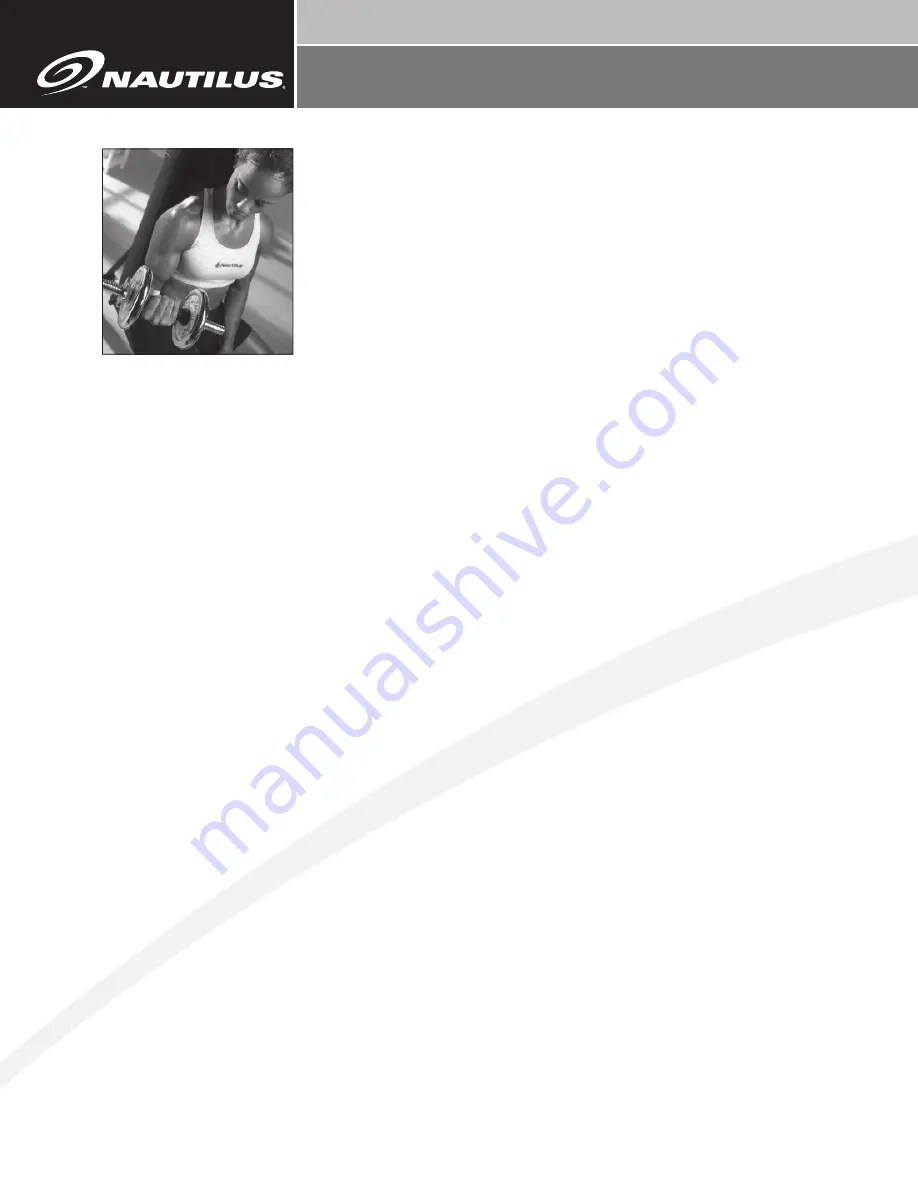
C H A N G I N G T H E G A M E I N H E A LT H A N D F I T N E S S
™
26
body mass as they
get older. What this
means is that if you
just do cardiovascular
activity, your body will
naturally lose muscle
mass as you get older,
and that means that
you will actually get
“fatter” as you age,
unless you incorporate strength training.
We have also learned that consistent strength
training helps maintain bone and muscle mass as we
get older. For women, strength training (along with
cardiovascular training) may also protect against
post-menopausal bone loss and osteoporosis in
their later years.
And strength training is not complicated. It is
recommended that you do 8 – 12 repetitions of
8 – 10 major muscle groups at least 2 days a week.
However, you don’t have to do all these exercises at
once. You can break them up into shorter workouts
throughout the day. For example, you can do just
upper body exercises in the morning, and your lower
body exercises in the evening. Or, you can alternate
strength exercises with cardiovascular exercise
(often known as circuit training) by switching back
and forth every couple of minutes.
Flexibility
is being able to bend, reach, twist and turn
with comfort and ease as we perform daily tasks, play
or exercise. It is perhaps the most ignored component
of fi tness, but certainly the easiest one to incorporate
into our daily lives because it can be done anywhere
and almost at any time.
To maintain your fl exibility, you simply need to stretch.
This could be as simple as reaching for your toes, or
reaching overhead when you wake up in the morning.
Or maybe you enjoy it so much that you would be
interested in trying the Nautilus® yoga workout
video. You can even incorporate stretching into your
strength training workouts by stretching the muscles
you have used immediately after you have completed
your exercise set.
Like cardiovascular training, it is recommended that
you stretch every day. However, you do not need to
create a formalized program. You can simply make
sure that you stretch your major muscle groups
throughout the day. Make sure you include your thighs,
calves, hamstrings, back, chest, neck and shoulders.
Do what feels good, but also remember to mix it up.
Don’t just do traditional “reach and hold” stretches.
Also, try gently moving through a range of motion that
is comfortable to you. For example, you don’t have to
stretch your neck simply by pulling on your head with
your hand. You can also just rotate the neck slowly
around and look side to side.
Nutrition
Of course, every good health and fi tness program
will also include a good nutrition component.
Good nutrition is likely the most important factor
in maintaining ideal body weight and managing
weight loss.
There are a variety of schools of thought regarding
which nutrition program, diet or eating plan is best.
While we do not promote or endorse any particular
one, here are some things to consider that will help
you get on the road to a healthy diet:
Understand caloric balance.
How many Calories
you intake, and how many Calories you burn off will
determine whether you will gain or lose weight day
to day. It is impossible to achieve weight loss without
some sort of “Caloric defi cit” that can be obtained
through cutting Calories, or burning off more than
you take in. The wisest approach is to do a little of
EXERCISE & FITNESS GUIDELINES
CommElliptical_OM_0305.indd 26
6/6/2005 2:22:56 PM




























